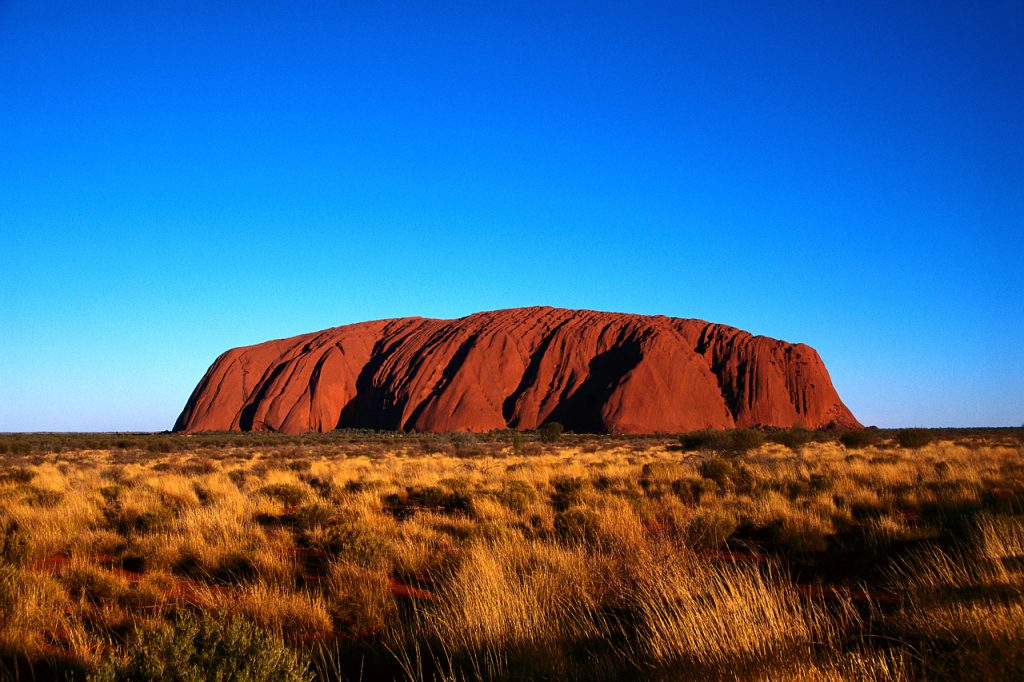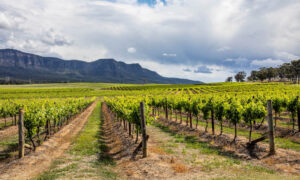
Ayers Rock Under a Blue Sky Uluru National Park, Australia
The enormous monolith and World Heritage Site of Uluru, also known as Ayers Rock, fascinates and inspires people from around the world with its glowing presence at sunrise and sunset. The Uluru and Kata Tjuta you see today are the remains of erosion that began around 500 million years ago. Both formations are but visible tips of enormous slabs of rock that extend as far as six kilometres into the ground.
Archaeological work suggests that Aboriginal people have lived in the area for at least 22,000 years. The Anangu people are Uluru’s traditional custodians but until recently, the famous monolith was known as Ayers Rock, named after former premier Sir Henry Ayers by European explorer William Gosse, who first sighted the rock in 1873. Uluru was returned to the care and ownership of the Anangu in 1985 and they now jointly manage the national park with Parks Australia.
Due to it’s sacred history, it is important as a responsible traveller to consider the local history, people and customs of Ayers Rock.
You can help support the Uluru-Kata Tjuta region and the rich indigenous culture whilst learning about the area from an Aboriginal perspective, by visiting Uluru-Kata Tjuta Cultural Centre, buying local art or joining a tour with a local Aboriginal guide.
The main travel tip is that the Anangu people prefer visitors don’t climb Uluru because it’s a sacred site. So nowadays many visitors choose to do the 9.4 km Uluru base walk instead and I strongly recommend the full walk, as it really is a wonderful place to visit and spend time. The Ayers Rock walk is divided into sections, or visitors can choose to walk the entire circumference. It begins at the base of the climb and three to four hours should be allowed to complete it.
The unsealed Mereenie Loop is recognised as one the greatest desert drives in Australia. Connecting Alice Springs with Watarrka National Park and Uluru-Kata Tjuta via a stretch of dirt track that ploughs through the West MacDonnell Ranges, it’s an interesting alternative to the Explorer’s Way. Final tip, Australia can throw up tough travel conditions at times and to use a local travel expert or travel operator is always recommended.




